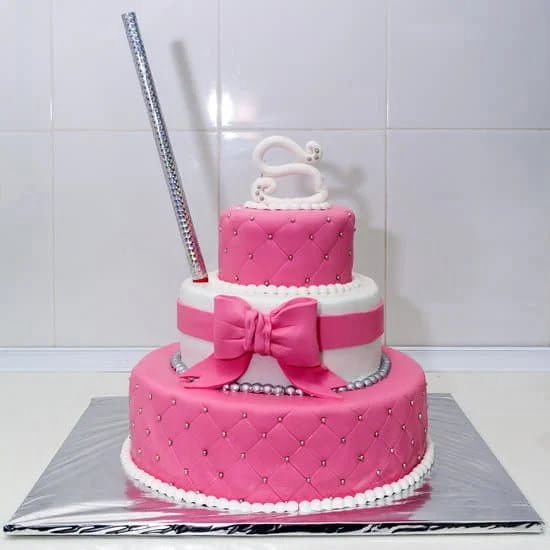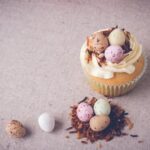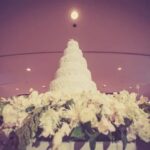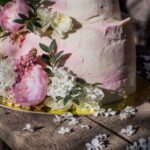Airbrush Cake Decorating Baking has become a popular trend in the world of cake decorating. This technique involves using an airbrush system to spray food-grade colors onto cakes, creating beautiful and intricate designs. The art of airbrushing brings a new level of creativity and possibilities to baking, allowing decorators to achieve smooth gradients, shading, and blending colors flawlessly.
In recent years, the use of airbrushing techniques in cake decorating has gained significant attention. Many bakers and decorators are drawn to this method because it allows them to create stunning designs that were previously difficult or time-consuming to achieve by hand. The airbrushing technique opens up endless possibilities for creating unique and customized cakes, from simple patterns to elaborate landscapes or themed creations.
One of the main benefits of airbrushing is the ability to create smooth transitions between colors, achieving gradients that are impossible with traditional frosting techniques. This enables decorators to add depth and dimension to their cakes, making them visually striking and incredibly detailed. Additionally, airbrushing allows for precise control over the amount of color applied, resulting in more consistent and even coverage on the cake surface.
With the growing popularity of airbrush cake decorating baking, it is essential for aspiring decorators to understand the artistry behind this technique. In this article, we will explore everything you need to know about airbrush cake decorating baking – from the necessary tools and equipment to step-by-step guides on mastering the technique.
We will also delve into design inspirations, safety measures for food hygiene, troubleshooting common challenges, advanced techniques, and showcase some incredible airbrushed masterpieces created by renowned cake artists. So let’s dive into the world of Airbrush Cake Decorating Baking and discover how this technique can elevate your baking creations.
The Essentials
Airbrush cake decorating baking requires a specific set of tools and equipment to achieve professional-looking results. In this section, we will discuss the must-have items for airbrush cake decorating baking and highlight the different options available in the market.
Airbrush Systems
There are various airbrush systems available, catering to different skill levels and budgets. The two main types are gravity-feed and siphon-feed airbrushes. Gravity-feed airbrushes allow for more control over color flow and are ideal for intricate designs. On the other hand, siphon-feed airbrushes have larger cups, making them suitable for covering larger areas.
Compressor
A compressor is an essential component of an airbrush system as it provides the necessary pressure for the airbrush gun to spray the food-grade colors onto the cake. When choosing a compressor, look for one that has adjustable pressure settings and comes with a moisture trap to prevent water from contaminating your colors.
Stencils
Stencils are invaluable tools for adding patterns, textures, or specific designs to your airbrushed cakes. They come in a wide range of shapes and sizes, allowing you to create intricate details effortlessly. Look for stencils made specifically for food decorating to ensure they are safe to use on cakes.
Food-Grade Colors
Using food-grade colors is crucial in ensuring the safety of your airbrushed cakes. These colors are specially formulated using edible ingredients that comply with food regulations. They come in both liquid and powdered forms, each offering unique advantages in terms of color intensity and ease of use.
When starting out with airbrush cake decorating baking, investing in high-quality tools and equipment can make a significant difference in achieving professional results. By having the right airbrush system, compressor, stencils, and food-grade colors, you will be well-equipped to explore the endless possibilities of this art form.
Mastering the Technique
Airbrush cake decorating baking is a creative and visually appealing technique that can take your cakes to the next level. Whether you’re a professional baker or an enthusiastic home baker, mastering the art of airbrushing can elevate your cake designs and impress your guests. In this section, we will provide you with a step-by-step guide to help you master the technique of airbrush cake decorating baking.
Step 1: Prepare the Base
Before starting the airbrushing process, it’s important to prepare the base of your cake. Ensure that your cake is properly leveled and crumb coated with a smooth layer of buttercream or ganache. This will provide a solid foundation for your airbrushed design.
Step 2: Choose Your Colors and Stencils
Select food-grade colors that are specifically made for airbrushing cakes. These colors offer vibrant shades and easy application. Additionally, choose stencils that suit your desired design. Stencils can be used to create patterns, shapes, or intricate details on your cake.
Step 3: Start Airbrushing
Begin by setting up your airbrush system according to the manufacturer’s instructions. Test the spray pattern on a piece of scrap paper before applying it to your cake. Hold the airbrush gun at a slight angle and start applying color in light layers, gradually building up to reach the desired shade and effect.
Step 4: Add Depth and Dimension
To create depth and dimension, use shading techniques with different shades of colors. Apply darker colors on areas where shadows would naturally occur, such as crevices or curves on your cake. Then use lighter colors to highlight certain areas and create contrast.
Step 5: Blend Colors Seamlessly
Achieving smooth gradients requires careful blending of colors. To achieve this effect, slightly overlap each layer of color while maintaining consistent pressure on the airbrush gun. Make sure to blend colors seamlessly without leaving any harsh lines or edges.
Mastering airbrush cake decorating baking takes practice and experimentation. Don’t be afraid to try different techniques and explore various color combinations to create stunning and unique designs. With dedication and patience, you’ll soon be able to create masterpieces that will leave everyone in awe.
Unleashing Creativity
Airbrush cake decorating baking opens up a world of creativity and endless design possibilities. With the use of an airbrush gun and food-grade colors, cake decorators can achieve stunning designs that are difficult to replicate using traditional techniques. Whether you’re looking to create bold, vibrant cakes or intricate, delicate designs, airbrushing allows you to take your creations to the next level.
One popular design inspiration for airbrush cake decorating baking is floral patterns. Using stencils or freehand techniques, decorators can create beautiful flowers in various shades and gradients. From lifelike roses to whimsical daisies, the airbrush adds depth and dimension to these floral designs, making them look incredibly realistic.
Another area where airbrushing excels is in creating landscapes on cakes. By layering different colors and using blending techniques, decorators can achieve stunning scenes like sunsets, oceans, or picturesque mountains. The airbrush allows for seamless transitions between colors and enables decorators to add finer details that bring the landscape to life.
Themed creations are also popular when it comes to airbrush cake decorating baking. From superhero-themed cakes to fairy tale-inspired designs, the possibilities are endless. Airbrushing allows decorators to capture the essence of each theme by adding intricate details such as textures or shading. The result is a visually stunning cake that truly captures the spirit of the chosen theme.
Safety Measures
Ensuring food safety and hygiene is of utmost importance when it comes to airbrush cake decorating baking. While the artistic possibilities may be endless, it is crucial to prioritize the well-being of those who will be consuming the final product. Here are some essential safety measures to keep in mind:
- Use Food-Grade Colors: When selecting colors for airbrushing cakes, always opt for food-grade colors that are specifically formulated for edible use. These colors are made from safe ingredients and undergo rigorous testing to ensure they meet health and safety standards.
- Proper Cleaning Practices: Regularly clean and maintain your airbrush equipment to prevent cross-contamination and the buildup of harmful bacteria. After each use, disassemble the airbrush gun and wash all parts thoroughly with warm water and mild soap. Rinse well and allow them to air dry completely before reassembling.
- Hygiene Precautions: Maintain good hygiene practices throughout the cake decorating process by washing your hands thoroughly before handling any ingredients or equipment. Avoid touching the nozzle or cup of the airbrush gun with bare hands; instead, wear food-safe gloves or use disposable caps to cover these areas.
- Storage Guidelines: Once a cake has been airbrushed, proper storage is vital to maintain its integrity. Store finished cakes in a clean, cool environment away from direct sunlight or heat sources that can cause colors to fade or melt. Use food-grade packaging materials like sturdy cake boxes or containers that provide adequate protection during transportation or display.
By following these safety measures, you can ensure that your airbrushed cakes not only look stunning but also meet the highest standards of food safety and hygiene. Remember, it’s always better to prioritize the well-being of your customers and loved ones above all else when indulging in this creative baking method.
Troubleshooting
Clogging and Inconsistent Spray Patterns
One of the most common challenges in airbrush cake decorating baking is dealing with clogging and inconsistent spray patterns. This can be frustrating, especially when you’re in the middle of creating a masterpiece. To overcome these issues, there are a few things you can try:
First, make sure to properly clean your airbrush gun after each use. Any residual color or moisture left in the gun can cause clogging. Use a cleaning solution specifically designed for airbrush guns and follow the manufacturer’s instructions.
It’s also important to properly thin your food-grade colors before using them in the airbrush gun. If the colors are too thick, they are more likely to clog your gun or create inconsistent spray patterns. Experiment with different levels of thinning until you find the right consistency for your desired effect.
If you’re experiencing inconsistent spray patterns, it could be due to an issue with your compressor’s pressure settings. Adjusting the pressure slightly may help achieve a more even and consistent spray.
Color Bleeding
Color bleeding is another challenge that may occur when airbrushing cakes. This happens when two or more colors mix together unintentionally, resulting in a messy or blurred design. Here are some tips to prevent color bleeding:
Start by allowing each layer of color to fully dry before applying another one on top. This will help ensure that each color stays separate and doesn’t bleed into one another.
Another technique is to use stencil masks or barriers to create clean edges between different colors. By carefully placing stencils over previously airbrushed areas, you can protect them from unwanted overspray and prevent colors from mixing together.
Using a fine-mesh filter in your airbrush gun can also help minimize color bleeding by preventing larger pigment particles from entering the spray pattern.
Uneven or Patchy Colors
Achieving smooth gradients and even coverage is essential in airbrush cake decorating baking. However, sometimes colors can appear uneven or patchy on the cake. Here are some tips to overcome this challenge:
Ensure that you have consistent pressure throughout your airbrushing process. Inconsistent pressure can result in uneven color distribution. Practice maintaining a steady hand and applying an even amount of pressure while moving the airbrush gun across the cake.
Consider starting with a base coat of a lighter color to create a smooth canvas before layering on additional colors. This will help create a more uniform background and allow subsequent colors to blend seamlessly.
If you’re still experiencing uneven or patchy colors, try adjusting the distance between the airbrush gun and the cake surface. Experiment with different distances to find the sweet spot that gives you the desired effect.
By implementing these troubleshooting techniques, you’ll be able to overcome common challenges in airbrush cake decorating baking and achieve stunning results every time. Remember, practice makes perfect, so don’t be discouraged if it takes some time to master these techniques.
Advanced Techniques
Airbrush cake decorating baking is not limited to basic designs and patterns. With advanced techniques, cake decorators can push the boundaries of creativity and take their airbrushing skills to the next level. This section will introduce some of these advanced techniques that allow for more intricate and detailed designs on cakes.
One advanced technique in airbrush cake decorating is freehand airbrushing. This technique involves using the airbrush gun to create designs directly on the cake without the use of stencils or templates. It requires a steady hand and a good understanding of shading and blending colors. Freehand airbrushing allows decorators to create unique, one-of-a-kind designs that are not restricted by pre-made stencils.
Stencil layering is another technique that can be used to add complexity and depth to airbrushed designs. By layering different stencils on top of each other, decorators can create multi-dimensional images with various colors and patterns. This technique requires precision in aligning and masking off areas of the cake, but it allows for intricate details that would otherwise be difficult to achieve.
Using edible metallics is yet another way to push the boundaries of airbrush cake decorating baking. Edible metallic colors can give a cake a shiny, metallic finish, adding a touch of elegance or glamour to any design. Whether it’s creating a realistic gold texture or adding shimmering accents, edible metallics can elevate an airbrushed design and make it truly stand out.
These advanced techniques demonstrate the versatility and artistic possibilities that come with airbrush cake decorating baking. They allow decorators to unleash their creativity and create cakes that are truly works of art.
| Advanced Technique | Description |
|---|---|
| Freehand Airbrushing | Create designs directly on the cake without stencils or templates |
| Stencil Layering | Layer stencils on top of each other to create multi-dimensional images |
| Edible Metallics | Add a shiny, metallic finish with edible metallic colors |
Showcasing Airbrushed Masterpieces
In the world of cake decorating, airbrushing has become a popular technique that allows for endless creativity and stunning designs. From floral patterns to landscapes to themed creations, the possibilities are truly limitless with airbrush cake decorating baking. In this section, we will delve into some of the best airbrush cake designs and showcase the work of renowned cake artists.
One of the remarkable aspects of airbrush cake decorating is the ability to create depth and dimension in a way that traditional piping or frosting techniques cannot achieve. The use of shading, gradients, and blending colors flawlessly allows for intricate details and realistic textures. With airbrushing, cake decorators can bring their visions to life in vibrant colors that are sure to capture attention.
Renowned cake artists have taken this technique to new heights, pushing the boundaries of what is possible with airbrush cake decorating baking. Their exceptional creations serve as inspiration for aspiring decorators who want to master this art form. By showcasing these masterpieces, we aim to not only highlight the talent and creativity of these artists but also provide insights into their techniques and tips.
For those who dream of creating their own airbrushed masterpieces, it is important to remember to start small and practice before attempting more complex designs. Patience is key when mastering any skill, and airbrushing cakes is no exception. By gradually experimenting with different techniques like freehand airbrushing or stencil layering, decorators can begin to develop their unique style.
In conclusion, airbrush cake decorating baking opens up a whole new world of possibilities for cake decorators. With its ability to create depth and dimension through shading and blending colors flawlessly, it allows for stunning designs that captivate both the eyes and taste buds. By showcasing some of the best airbrushed cake designs from renowned artists in this section, we hope to inspire aspiring decorators on their journey toward creating their own works of art.
Frequently Asked Questions
Can an airbrush be used for cake decorating?
Yes, an airbrush can be used for cake decorating. It is a versatile tool that allows decorators to achieve smooth, even color coverage on cakes and create various artistic effects.
By using food-safe airbrush colors, decorators can easily spray different shades and gradients onto the surface of the cake. The airbrush technique is commonly used to paint designs, add shading or highlighting, create stenciled patterns, and achieve a professional finish on cakes.
How long does an airbrushed cake take to dry?
The drying time of an airbrushed cake can vary depending on several factors. Generally, it takes about 20-30 minutes for the airbrushed colors to set and dry properly on the cake’s surface.
However, this timeframe may change depending on factors such as humidity levels and the thickness of the color application. It’s important to allow enough time for the colors to dry completely before handling or transporting the cake to avoid any smudging or damage.
What are the tips for airbrushing a cake?
When airbrushing a cake, there are a few tips that can help ensure good results. First, it’s essential to start with a clean and well-prepared cake surface. Any crumbs or imperfections can affect the final appearance of the airbrushed design. Additionally, practice proper control over the airbrush by maintaining consistent distance and pressure while spraying.
This will help achieve even color distribution and prevent overspray or blotchy areas. It’s also crucial to use food-safe airbrush colors specifically designed for cake decorating since they are formulated for edible applications and offer vibrant colors without altering taste or texture. Finally, consider using stencils if you’re new to airbrushing as they can assist in creating precise designs and patterns more easily than freehand techniques.

Welcome to our cake decorating blog! My name is Destiny Flores, and I am the proud owner of a cake decorating business named Cake Karma. Our mission is to provide delicious, beautiful cakes for all occasions. We specialize in creating custom cakes that are tailored specifically to each customer’s individual needs and tastes.





